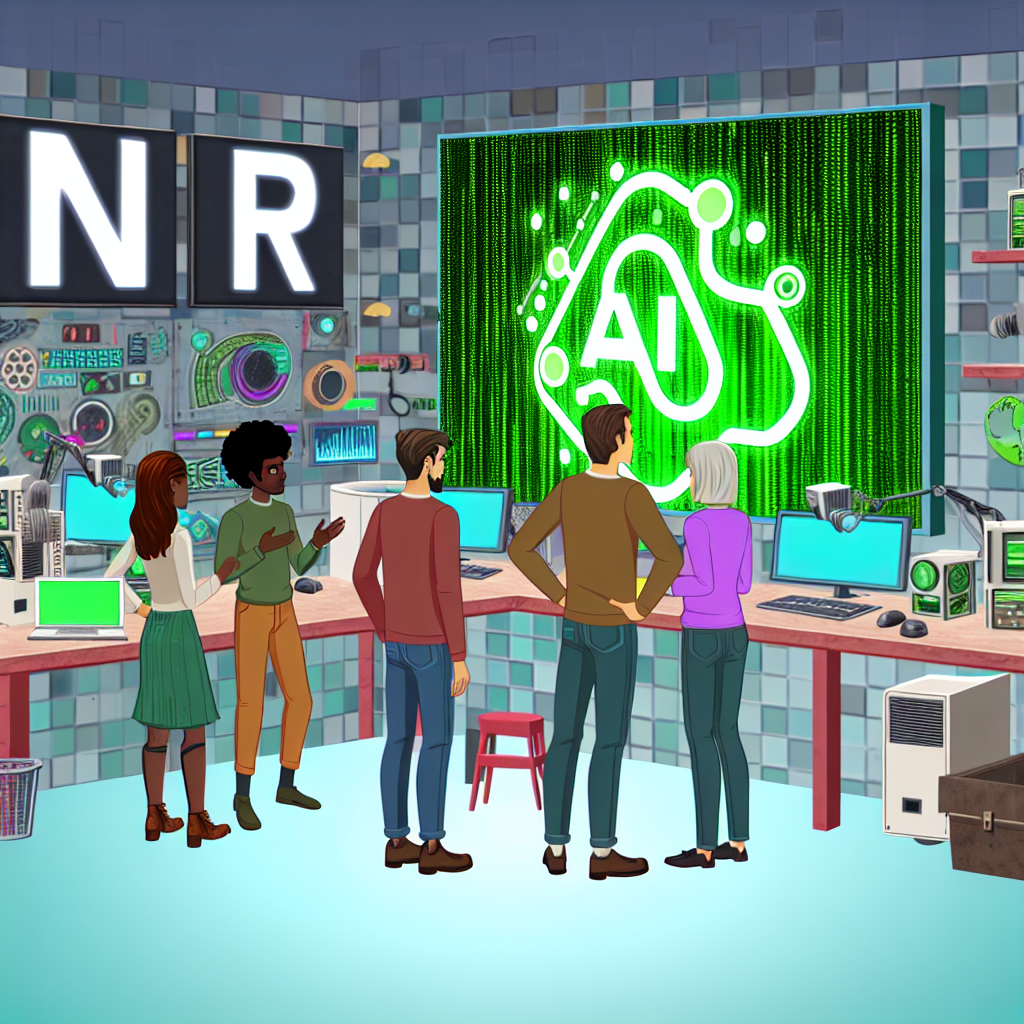The Tech Industry Faces AI’s Environmental Dilemma
As the tech industry accelerates its investment in AI, the environmental implications of this energy-hungry technology are coming under scrutiny.
AI has transformed the way we interact with technology, but its rapid expansion raises significant concerns about energy consumption and environmental sustainability. With data centers projected to consume up to 12% of the nation’s electricity by 2028, the urgency to address AI’s environmental footprint has never been greater.
AI의 발전은 우리가 기술과 상호작용하는 방식을 변화시켰지만, 그 급속한 확장은 에너지 소비와 환경 지속 가능성에 대한 심각한 우려를 불러일으킵니다. 데이터 센터가 2028년까지 국가 전력의 최대 12%를 소비할 것으로 예상됨에 따라 AI의 환경적 발자국을 해결해야 할 긴급성이 그 어느 때보다 커졌습니다.
The Race for Sustainable AI
Leading tech companies like Google, Microsoft, Amazon, and Meta are investing heavily in AI infrastructure while also setting ambitious climate goals. They aim for net-zero carbon emissions, with deadlines ranging from 2030 to 2040. However, the construction of new data centers continues to rise, raising questions about the feasibility of these targets.
구글, 마이크로소프트, 아마존, 메타와 같은 주요 기술 기업들은 AI 인프라에 막대한 투자를 하면서도 야심찬 기후 목표를 설정하고 있습니다. 이들은 2030년부터 2040년까지의 기한을 두고 탄소 배출 제로를 목표로 하고 있습니다. 그러나 새로운 데이터 센터의 건설은 계속 증가하고 있어 이러한 목표의 실현 가능성에 의문을 제기합니다.
Innovative Solutions on the Horizon
To mitigate the environmental impact, companies are exploring various strategies. One promising approach is liquid cooling technology, which significantly improves energy efficiency in data centers. By using synthetic fluids to cool servers, companies can reduce energy consumption and prolong the lifespan of their equipment.
환경적 영향을 완화하기 위해 기업들은 다양한 전략을 모색하고 있습니다. 유망한 접근 방식 중 하나는 데이터 센터의 에너지 효율성을 크게 향상시키는 액체 냉각 기술입니다. 합성 유체를 사용하여 서버를 냉각함으로써 기업들은 에너지 소비를 줄이고 장비의 수명을 연장할 수 있습니다.
The Case for Smaller AI Models
Another innovative solution is the development of smaller AI models tailored for specific tasks. These models require less energy and can perform efficiently without the need for massive data centers. Companies are beginning to recognize the potential of these smaller models, which could significantly reduce the overall energy footprint of AI.
또 다른 혁신적인 해결책은 특정 작업에 맞춰진 소형 AI 모델의 개발입니다. 이러한 모델은 에너지를 덜 소모하며 대규모 데이터 센터 없이도 효율적으로 작동할 수 있습니다. 기업들은 이러한 소형 모델의 잠재력을 인식하기 시작하고 있으며, 이는 AI의 전체 에너지 발자국을 상당히 줄일 수 있습니다.
A Call for Transparency and Accountability
As the tech industry grapples with its environmental impact, there is a growing call for transparency in AI operations. Advocates argue for an industry-wide score for AI models, similar to the Energy Star program for appliances. This could encourage companies to adopt more sustainable practices and hold them accountable for their environmental footprint.
기술 산업이 환경적 영향을 고민하는 가운데, AI 운영의 투명성을 요구하는 목소리가 커지고 있습니다. 지지자들은 가전 제품의 에너지 스타 프로그램과 유사한 AI 모델에 대한 산업 전반의 점수를 주장하고 있습니다. 이는 기업들이 보다 지속 가능한 관행을 채택하도록 장려하고, 그들의 환경적 발자국에 대한 책임을 지도록 할 수 있습니다.
Final Thoughts
As we stand on the brink of an AI revolution, it is crucial for the tech industry to prioritize sustainability. The choices made today will shape the future of AI and its environmental impact. Balancing innovation with responsibility is not just a challenge; it is an opportunity to redefine how technology can coexist with our planet.
AI 혁명의 직전에 서 있는 지금, 기술 산업이 지속 가능성을 우선시하는 것이 중요합니다. 오늘의 선택은 AI의 미래와 그 환경적 영향을 형성할 것입니다. 혁신과 책임의 균형을 맞추는 것은 단순한 도전이 아니라 기술이 우리 지구와 공존할 수 있는 방식을 재정의할 기회입니다.
출처: NPR
Recommended Hashtags: #AI #Sustainability #TechIndustry #Environment #ArtificialIntelligence #환경 #지속가능성 #기술산업 #인공지능
